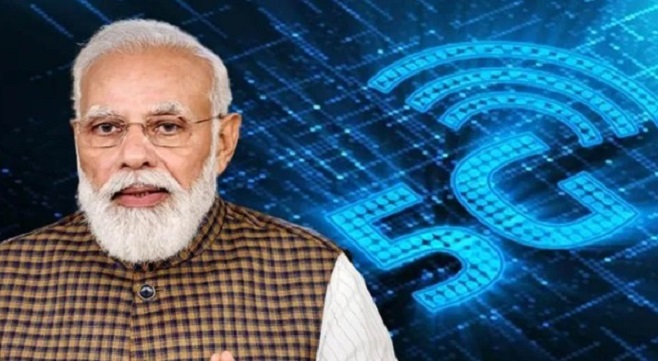
India’s Telecommunication Landscape Set to Transform with PM Modi’s 5G Plans
rajkotupdates.news:pm-modi-india-plans-to-launch-5g-services-soon: The telecommunication industry in India is on the brink of a monumental transformation as Prime Minister Narendra Modi unveils his plans for the implementation of 5G technology. With its promise of faster speeds, lower latency, and enhanced connectivity, 5G has the potential to revolutionize various sectors, including healthcare, education, transportation, and smart cities. This article explores the impact of PM Modi’s 5G plans on India’s telecommunication landscape, focusing on the benefits, challenges, and the government’s initiatives to ensure a smooth and successful transition.
Also Read: rajkotupdates.news : elon musk pay 11 billion in taxes
The Benefits of 5G Technology
1. Enhanced Connectivity:
5G technology is expected to provide lightning-fast connectivity, enabling seamless communication between devices and opening up new possibilities for Internet of Things (IoT) applications. This improved connectivity will empower businesses, individuals, and government entities to operate more efficiently and effectively.
2. Economic Growth:
The deployment of 5G networks is anticipated to stimulate economic growth by fostering innovation, attracting foreign investment, and creating job opportunities. Industries such as e-commerce, digital entertainment, and cloud services will experience a significant boost, contributing to the overall development of the economy.
3. Industry Transformation:
5G will revolutionize various industries, including healthcare, education, transportation, and agriculture. Remote surgeries, virtual classrooms, autonomous vehicles, and smart farming are just a few examples of the transformative potential of 5G technology. These advancements will improve service delivery, optimize resource utilization, and enhance overall productivity.
Also Read: rajkotupdates.news : elon musk pay 11 billion in taxes
Challenges and Roadblocks
1. Infrastructure Development:
The successful implementation of 5G technology requires substantial infrastructure upgrades. The deployment of a dense network of small cell towers, fiber optic cables, and other supporting infrastructure is essential. However, the existing infrastructure in India falls short, and significant investments will be required to bridge this gap.
2. Spectrum Allocation:
Adequate spectrum allocation is crucial for 5G implementation. India’s telecom industry faces challenges in terms of spectrum availability and its efficient allocation. The government needs to address spectrum-related issues and provide a conducive environment for telecom operators to acquire and deploy the necessary spectrum.
3. Affordability and Accessibility:
One of the primary challenges is ensuring that 5G services are affordable and accessible to a wider population. The cost of devices, network tariffs, and the availability of affordable data plans need to be considered to avoid creating a digital divide.
4. Security Concerns:
As with any new technology, 5G comes with its own set of security challenges. The increased connectivity and dependence on the network make it susceptible to cyber threats. Robust security measures and frameworks need to be implemented to safeguard against potential risks.
Also Read: rajkotupdates.news : elon musk pay 11 billion in taxes
Government Initiatives and Policies
National Digital Communications Policy (NDCP) 2018: The NDCP aims to address the challenges of the telecom sector and create a conducive policy framework for the deployment of 5G. It focuses on facilitating infrastructure development, promoting investments, and ensuring affordable and secure access to digital services.
1. BharatNet Project:
The government’s ambitious BharatNet project aims to connect all rural areas with high-speed broadband, laying a solid foundation for the adoption of 5G. This project will provide the necessary backbone infrastructure for last-mile connectivity in remote areas.
2. Spectrum Auctions:
The Department of Telecommunications (DoT) has conducted multiple spectrum auctions to allocate the necessary frequency bands for 5G services. The government has taken steps to make the spectrum allocation process more transparent and efficient to facilitate the deployment of 5G networks.
3. Industry Collaboration:
The government is actively engaging with telecom operators, equipment manufacturers, and other stakeholders to foster collaboration and knowledge sharing. Public-private partnerships and joint initiatives are being encouraged to accelerate the implementation of 5G technology.
Also Read: rajkotupdates.news : elon musk pay 11 billion in taxes
Conclusion
Prime Minister Modi’s 5G plans have the potential to revolutionize India’s telecommunication landscape, ushering in a new era of connectivity, innovation, and economic growth. While there are challenges to overcome, the government’s initiatives, policies, and collaborations demonstrate a commitment to ensuring a smooth and successful transition to 5G. With the right infrastructure investments, spectrum allocations, and focus on affordability and security, India can fully harness the transformative power of 5G technology, benefiting businesses, individuals, and the nation as a whole.

